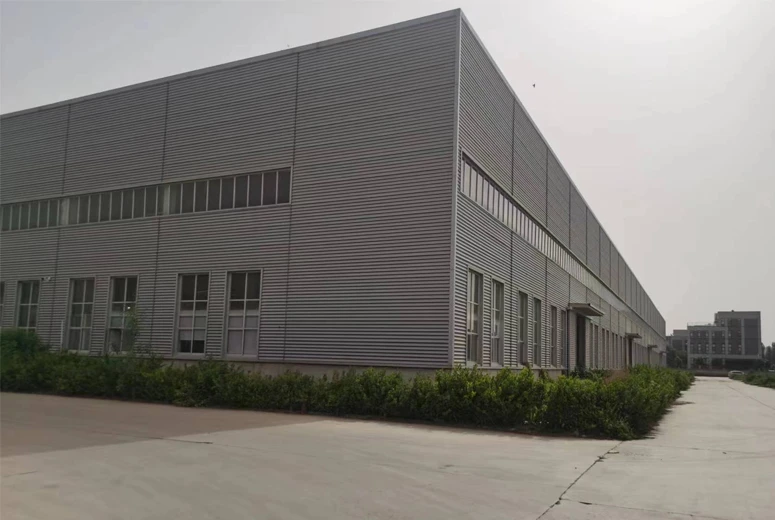Advanced Flying Cut-Off Machinery for Precision Cutting Solutions
The Innovation of Flying Cut Off Machines Revolutionizing Manufacturing
In the modern manufacturing landscape, efficiency and precision are pivotal components that determine a company's competitiveness in the market. Among the many technological advancements that have transformed manufacturing processes, the flying cut off machine stands out as a groundbreaking innovation. This sophisticated piece of equipment integrates high-speed cutting capabilities with advanced automation, providing manufacturers with unprecedented productivity and accuracy.
What is a Flying Cut Off Machine?
A flying cut off machine is a specialized tool used primarily in industries that require high-speed cutting of materials such as plastics, metals, and textiles. Unlike traditional cutting machines that operate in a fixed position, flying cut off machines utilize a moving blade that synchronizes with the material's movement. This unique design allows for continuous production lines, effectively minimizing downtime and maximizing output.
The core principle of operation involves a high-speed blade that flies through the material as it passes by on a conveyor belt or another transport mechanism. By aligning the cutting action with the material's movement, these machines can execute swift and precise cuts without interrupting the overall workflow. As a result, manufacturers can meet the demands of fast-paced production environments while ensuring consistently high-quality output.
Advantages of Flying Cut Off Machines
1. Increased Efficiency The most significant advantage of flying cut off machines is their ability to operate continuously without stopping the production line. This seamless integration into existing systems leads to significantly reduced cycle times, allowing manufacturers to boost their overall efficiency and productivity.
2. Enhanced Precision Because the cutting action is synchronized with the speed of the material, flying cut off machines deliver exceptional precision. This high degree of accuracy ensures that each cut meets strict tolerances, reducing waste and the need for rework.
flying cut off machine

3. Versatility Flying cut off machines are designed to handle a wide range of materials and thicknesses. Whether for cutting metal sheets, plastic rolls, or fabric bolts, they can be adapted for various applications across different industries, including automotive, aerospace, textiles, and food processing.
4. Automated Operations The incorporation of automation technologies further enhances the capabilities of flying cut off machines. Many models are equipped with advanced sensors and controls that monitor performance, detect anomalies, and allow for real-time adjustments, ensuring consistent quality and reducing the likelihood of human error.
5. Space Efficiency The compact design of flying cut off machines allows for their integration into existing production lines without requiring significant floor space. This feature is particularly advantageous for manufacturers looking to optimize their facilities without extensive remodeling.
Applications in Various Industries
Flying cut off machines are utilized in a variety of sectors, each with unique requirements. In the automotive industry, they are employed to cut materials such as rubber and plastics used in vehicle components, ensuring precise dimensions critical for safety and performance. The textiles industry benefits from their ability to cut fabric rolls into specific lengths without disrupting the fabric flow, allowing for efficient garment production.
In the metalworking sector, these machines provide the necessary speed and accuracy for cutting metal sheets into parts that require tight tolerances. Additionally, they are extensively used in the food processing industry for slicing items like meat and cheese in a fast yet sanitary manner, adhering to health standards while maintaining high production rates.
Conclusion
The evolution of manufacturing technologies continues to pave the way for innovations that enhance efficiency and maintain quality. Flying cut off machines represent a significant leap forward, combining speed, precision, and automation to revolutionize the cutting process in various industries. As manufacturers strive to meet the demands of an increasingly competitive marketplace, the adoption of flying cut off machines could be a game-changing decision, driving productivity and ensuring excellence in output. As technology advances, we can expect these machines to become even more sophisticated, further reshaping the future of manufacturing.
-
High Frequency Straight Seam Welded Pipe Production Line|BzZhou Xinghua|Precision Welding&EfficiencyNewsJul.30,2025
-
High Frequency Straight Seam Welded Pipe Production Line - BzZhou Xinghua|Precision Engineering&EfficiencyNewsJul.30,2025
-
High-Frequency Straight Seam Welded Pipe Production Line-BzZhou Xinghua Machinery Equipment Manufacturing Co., LTD.NewsJul.30,2025
-
High-Frequency Straight Seam Welded Pipe Production Line-BzZhou Xinghua Machinery Equipment Manufacturing Co., LTD.|Precision Manufacturing, High EfficiencyNewsJul.30,2025
-
High Frequency Straight Seam Welded Pipe Production Line-BzZhou Xinghua Machinery Equipment Manufacturing Co., LTD.|Precision Steel Pipe Manufacturing&Industrial EfficiencyNewsJul.29,2025
-
High-Frequency Straight Seam Welded Pipe Production Line-BzZhou Xinghua Machinery Equipment Manufacturing Co., LTD.|Precision Steel Pipe Manufacturing&Industrial EfficiencyNewsJul.29,2025


